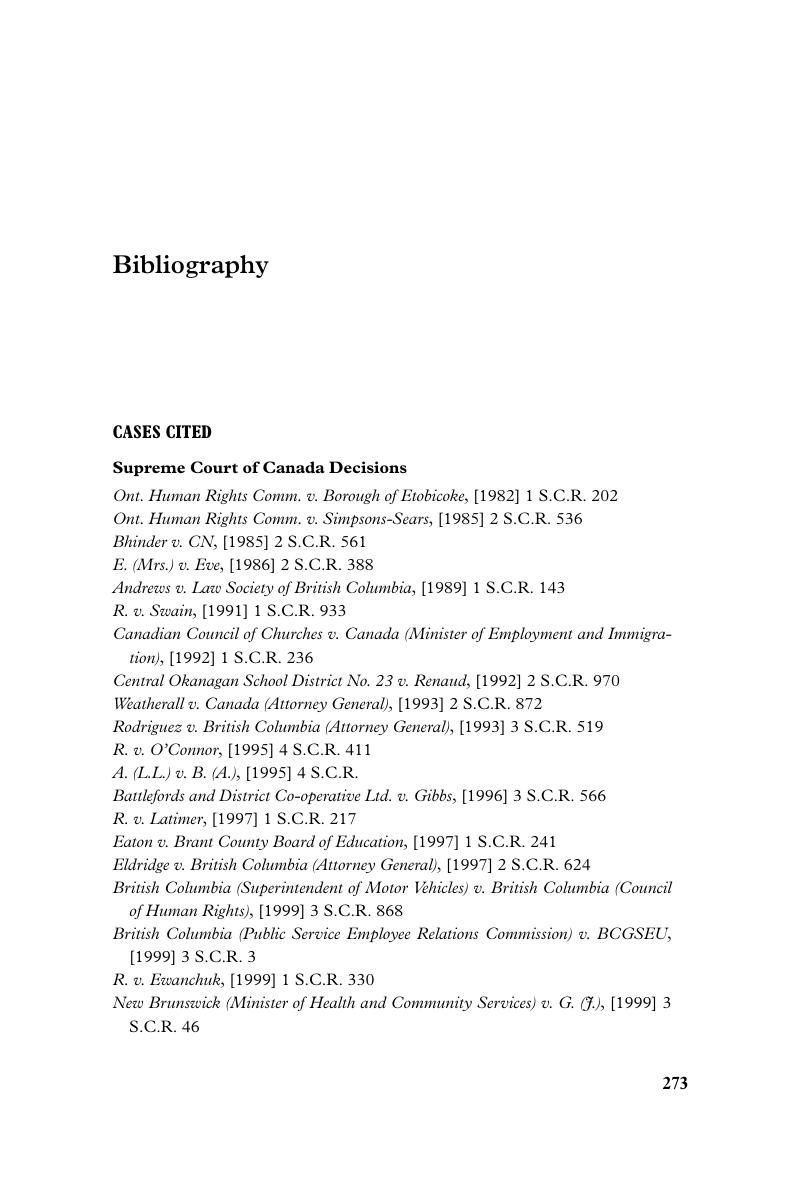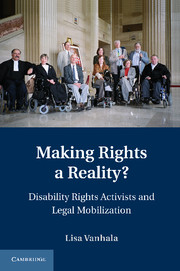Book contents
- Frontmatter
- Contents
- List of Figure and Tables
- Acknowledgments
- Abbreviations
- 1 Introduction: Legal Mobilization and Accommodating Social Movements
- 2 Rights and Political Identity in the Canadian Disability Movement
- 3 Disability Equality and Opportunity in the Supreme Court of Canada
- 4 Disability Organizations and the Diffusion of Rights in the United Kingdom
- 5 Framing Disability Equality in the UK Courts
- 6 Conclusions: Litigation, Mobilization, and Social Movements
- Bibliography
- Index
- References
Bibliography
Published online by Cambridge University Press: 03 May 2011
- Frontmatter
- Contents
- List of Figure and Tables
- Acknowledgments
- Abbreviations
- 1 Introduction: Legal Mobilization and Accommodating Social Movements
- 2 Rights and Political Identity in the Canadian Disability Movement
- 3 Disability Equality and Opportunity in the Supreme Court of Canada
- 4 Disability Organizations and the Diffusion of Rights in the United Kingdom
- 5 Framing Disability Equality in the UK Courts
- 6 Conclusions: Litigation, Mobilization, and Social Movements
- Bibliography
- Index
- References
Summary

- Type
- Chapter
- Information
- Making Rights a Reality?Disability Rights Activists and Legal Mobilization, pp. 273 - 282Publisher: Cambridge University PressPrint publication year: 2010



